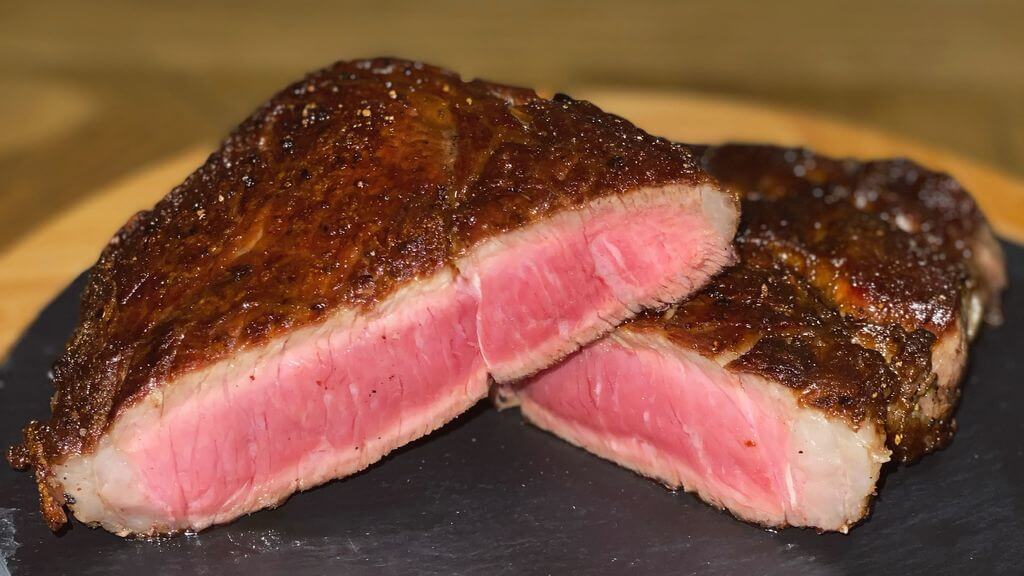Can Cats Eat Steak? A Comprehensive Guide For Cat Owners
Have you ever wondered if your feline friend can indulge in a juicy steak with you at dinner? Let’s uncover the truth about whether cats can feast on steak without any consequences.
As cat owners, we often wonder what human foods are safe to share with our furry companions. With its savory aroma and tender texture, steak is a tempting treat to offer our cats. However, it’s essential to understand our feline friends’ dietary needs and digestive capabilities before incorporating new foods into their diets.
Contents
Can Cats Eat Steak?
Cats can eat steak as a source of protein, but it should be cooked and unseasoned. Avoid fatty cuts, as excess fat can lead to digestive issues. Always remove bones to prevent choking hazards and ensure safety.
Are Steak Safe for My Cat?
Steak, particularly cuts of red meat like beef, is high in protein and fat. While protein is essential for cats, excessive fat can sometimes lead to digestive upset and even pancreatitis. Additionally, cooked steak often contains seasonings or marinades that may be harmful to cats, such as garlic or onion, which are toxic to felines.
Feeding your cat steak as an occasional treat in small, plain, and well-cooked portions is generally considered safe. However, it’s crucial to avoid feeding them seasoned or fatty cuts and to monitor their reaction closely. Some cats may not tolerate steak well and experience gastrointestinal issues such as vomiting or diarrhea.
Related: Can Cats Eat Raisins?
Conclusion
In conclusion, cats can technically eat steak, but they should not regularly consume it. Stick to a balanced diet formulated specifically for cats to ensure they receive the nutrients they need without risking their health. If you need clarification on whether a particular food is safe for your cat, it’s best to consult with your veterinarian for personalized advice. Remember, your cat’s well-being is always the top priority.
Note: The advice provided in this post is intended for informational purposes and does not constitute medical advice regarding pets. For an accurate diagnosis of your pet’s condition, please make an appointment with your cat’s doctor.
Related: Can Cats Eat Pickles?
Frequently Asked Questions (FAQs) about Cats Eating Steak:
Can cats eat steak?
Cats can eat steak, but it’s not recommended as a regular part of their diet.
What types of steak are safe for cats?
Plain, well-cooked cuts of lean steak without any seasonings or marinades are safest for cats.
Why shouldn’t I feed my cat steak regularly?
While steak is high in protein, it’s also high in fat, which can lead to digestive issues and potentially pancreatitis in cats. Additionally, some seasonings or marinades commonly used on steak can be toxic to cats.
How many steaks can I safely give my cat?
A small portion of plain, cooked steak is generally safe for cats as an occasional treat. However, it’s essential to monitor their reaction and not overindulge them.
What are the risks of feeding my cat steak?
Feeding steak to cats can pose risks such as gastrointestinal upset, vomiting, and diarrhea. Certain ingredients used in cooking steaks, such as garlic or onion, are toxic to cats and should be avoided.
Are there any benefits to feeding my cat steak?
While steak provides protein, which is essential for cats, safer and more balanced options are available in commercially prepared cat foods explicitly formulated for feline nutritional needs.
How should I prepare steak for my cat?
It’s best to prepare plain, well-cooked steak without any added seasonings, sauces, or marinades. Ensure the steak is cut into small, manageable pieces and cooled to an appropriate temperature before offering it to your cat.
What should I do if my cat eats steak and shows signs of illness?
If your cat exhibits any unusual symptoms after consuming steak, such as vomiting, diarrhea, lethargy, or loss of appetite, contact your veterinarian immediately for guidance and possible treatment.
- Golden Retriever Pros and Cons: What Every Pet Parent Should Know - 15 September 2025
- Cane Corso Dog Breed: Health, Care, and Lifespan - 14 September 2025
- Catahoula Leopard Dogs: Description, Temperament, Lifespan, & Facts - 21 July 2025







